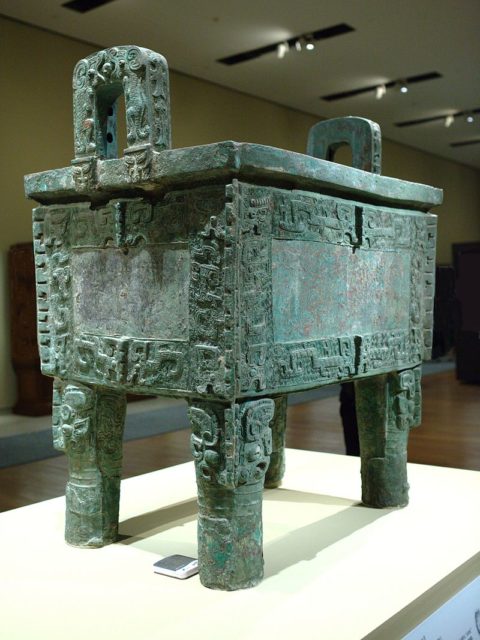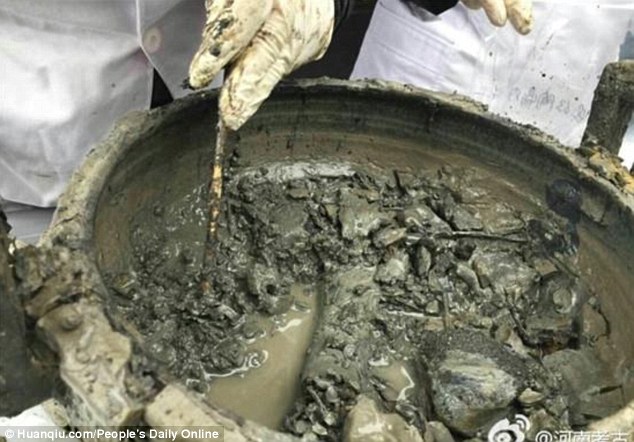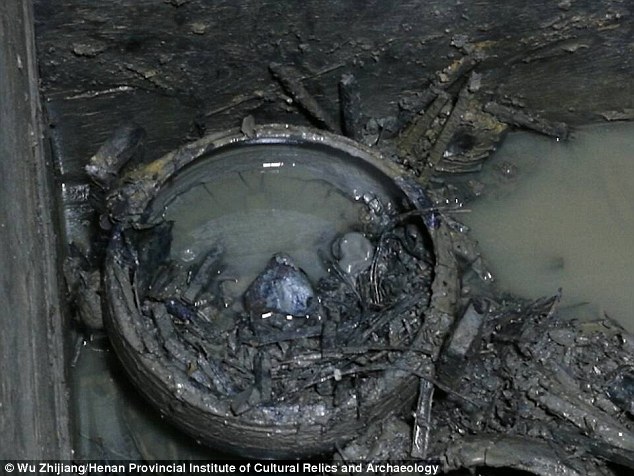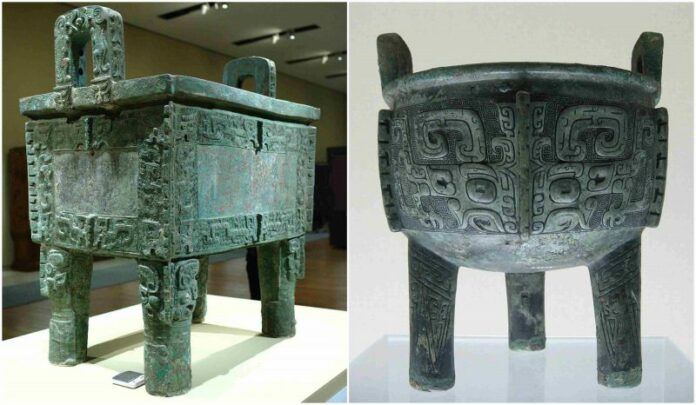In an intriguing discovery near the Chinese city of Xinyang, archaeologists unearthed a 2,300-year-old clay pot containing the forelegs of a cow. This ancient vessel, found in a tomb chamber, offers a fascinating glimpse into the customs and practices of the kingdom of Chu, which reigned in central and eastern China from 1,100 BC to 223 BC. The presence of cow bones in the pot raises questions about their purpose, sparking various theories and ongoing research.
The Discovery of the Ancient Pot

The large clay pot was uncovered in a tomb chamber situated near the city of Xinyang. When archaeologists examined the pot’s contents, they discovered bones identified as the forelegs of a cow. This unusual find has sparked curiosity and debate among experts. The exact purpose of the cow bones in the tomb remains a mystery. Some have humorously speculated that the bones might be remnants of an ancient beef stew, reflecting a light-hearted interpretation of the discovery.
Despite these entertaining theories, the true significance and intended use of the cow forelegs within the context of the burial practices of the time are still under investigation. Researchers are working to understand whether these bones were part of a ritualistic practice, a symbolic offering, or another aspect of ancient funerary customs.
The Significance of the Ding

The clay pot discovered is identified as a “ding,” a type of ancient Chinese vessel renowned for its distinctive design. A ding is characterized by its sturdy, tripod legs that elevate the container off the ground, a lid that covers the top, and loop handles on the sides. Initially crafted from clay, dings were later made from bronze, reflecting advancements in metalworking and the increasing importance of these vessels in ceremonial contexts.
Originally, dings were primarily used as cooking vessels. Their design allowed them to be placed over an open flame, making them suitable for preparing food. Over time, however, their function evolved, and they became more associated with ceremonial and ritualistic uses. Bronze dings, in particular, were often employed in sacrificial rites, serving as vessels for offerings to deities or ancestors.

The presence of a ding in a tomb is a significant indicator of the deceased’s high social status. In ancient China, the inclusion of a ding among grave goods suggested that the individual held a position of considerable importance or prestige. The more dings found in a tomb, the greater the perceived status of the person interred. Thus, the discovery of this ding not only highlights the artifact’s historical and ceremonial value but also provides insight into the social hierarchy of the period.
The Condition of the Tomb and the Ding

The tomb where the ding was found was in poor condition, suffering significant water damage. The ding itself contained muddy water, necessitating careful extraction and transport to a lab for expert analysis. Delicate handling is crucial to preserve the artifact and prevent further damage.
Current theories about the purpose of the cow bones in the ding suggest it could have been used either for cooking or as part of a burial ceremony involving sacrificial animals. Tests are ongoing to determine if the pot was used over an open flame, which would indicate a cooking purpose. Alternatively, it may have been used to transport slaughtered animals for the burial ceremony.
Historical Context and Comparisons

Dings hold a crucial place in ancient Chinese culture due to their ceremonial and functional roles. One of the most significant examples is the Si Mu Wu Giant Rectangular Ding, which is prominently displayed at the National Museum of China in Beijing. This remarkable bronze ding is notable for its impressive size and weight, standing at 133 cm (52 inches) high with a wall thickness of 4 cm (1.6 inches) and weighing an astounding 832 kg (1,834 pounds).
The Si Mu Wu Giant Rectangular Ding is among the largest and heaviest dings ever unearthed. It was discovered in 1939 in a small village in Henan province, and its massive proportions underscore the importance and grandeur of dings in ancient Chinese society. Such large and elaborate dings were not only used for cooking or offerings but also symbolized the wealth and status of their owners. The Si Mu Wu Ding, in particular, reflects the high level of craftsmanship and the ceremonial significance attributed to these ancient vessels. Its size and elaborate design make it a prominent example of the role dings played in ritual practices and their status as symbols of authority and prestige in ancient China.
Conclusion
The discovery of the 2,300-year-old cooking pot containing the forelegs of a cow offers a unique insight into the burial customs and societal structures of the ancient kingdom of Chu. As archaeologists continue to analyze the ding and its contents, we may uncover more about the rituals and daily life of this fascinating period in Chinese history.
